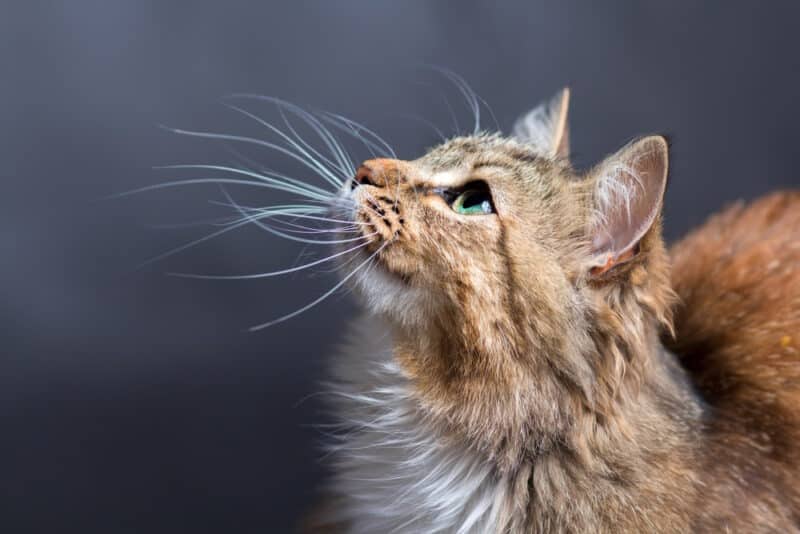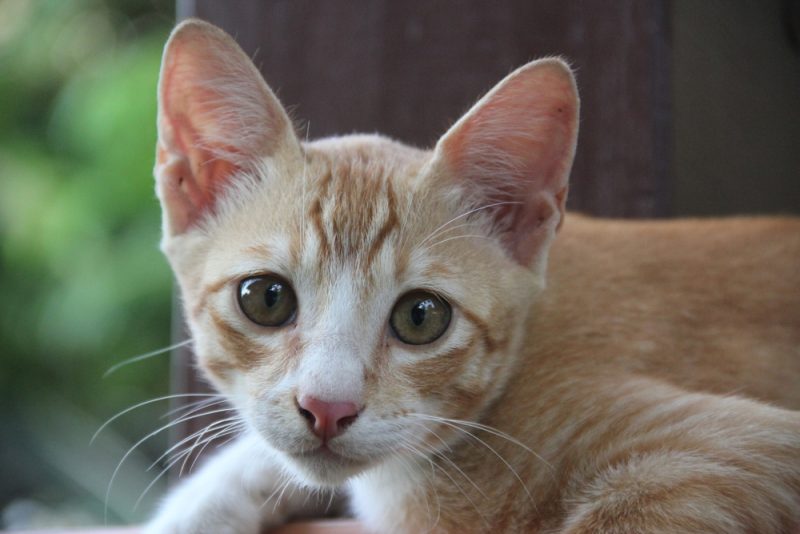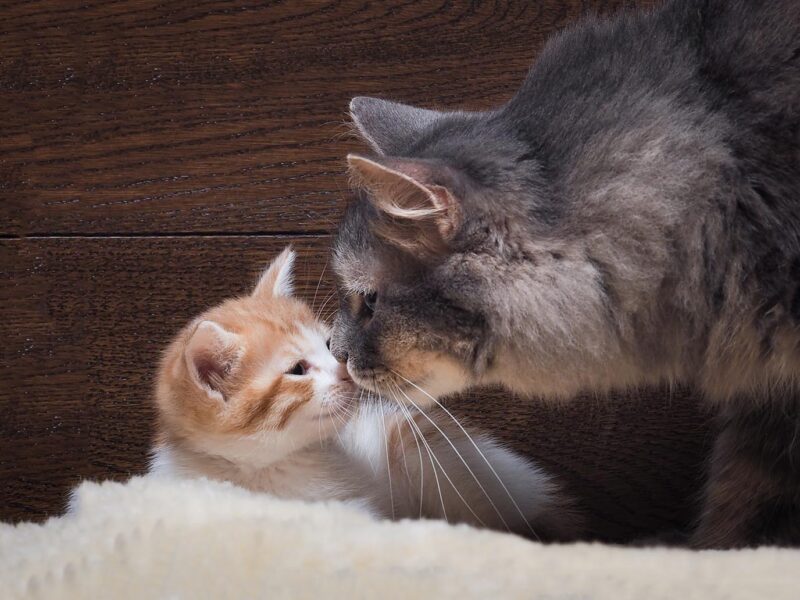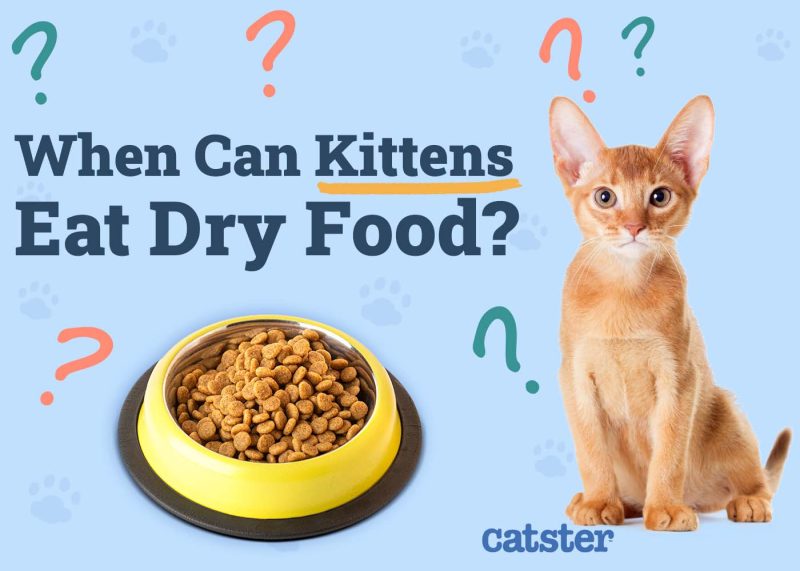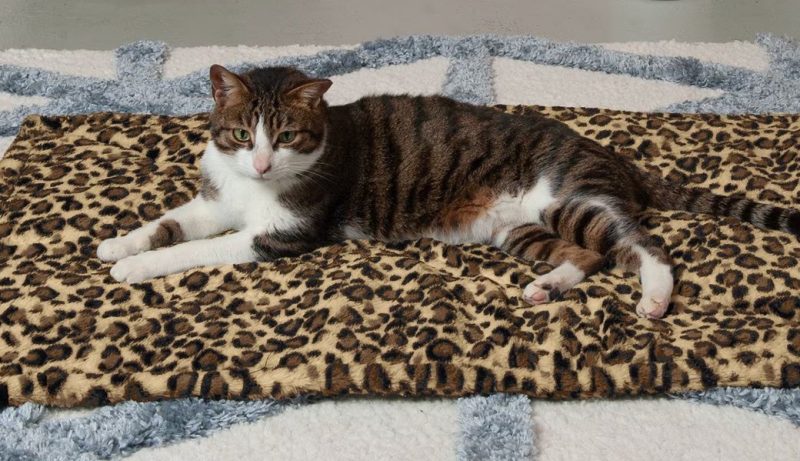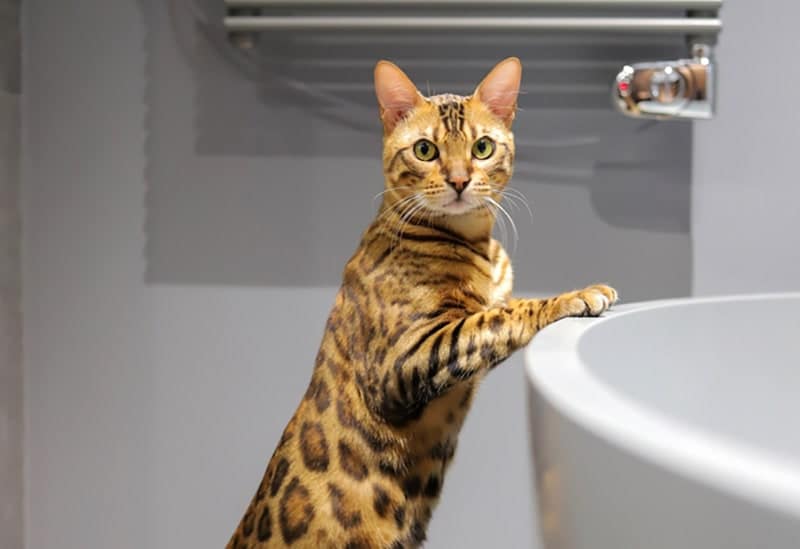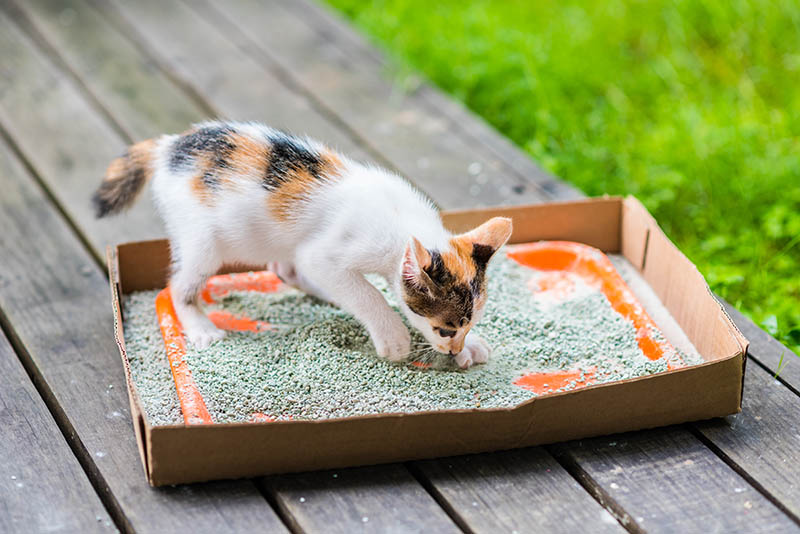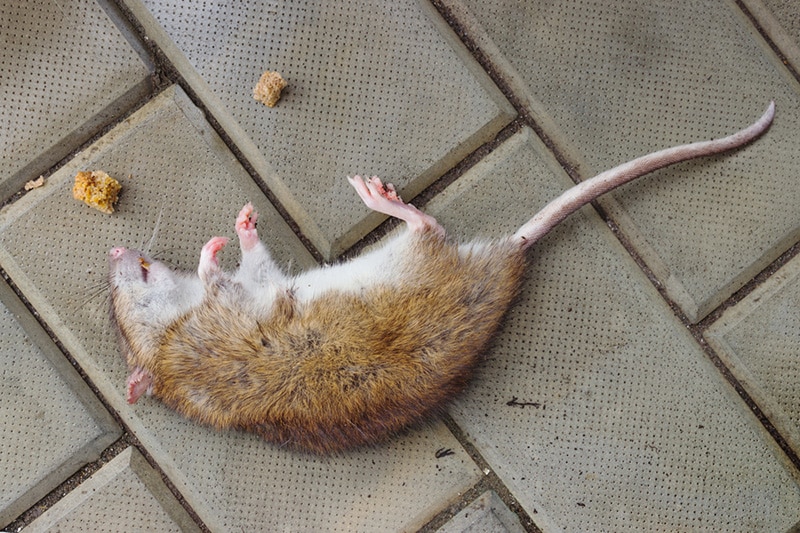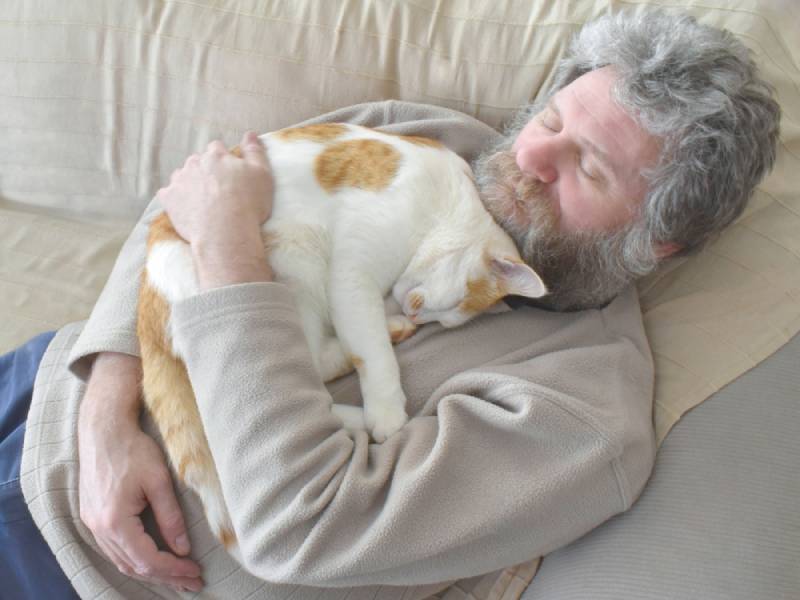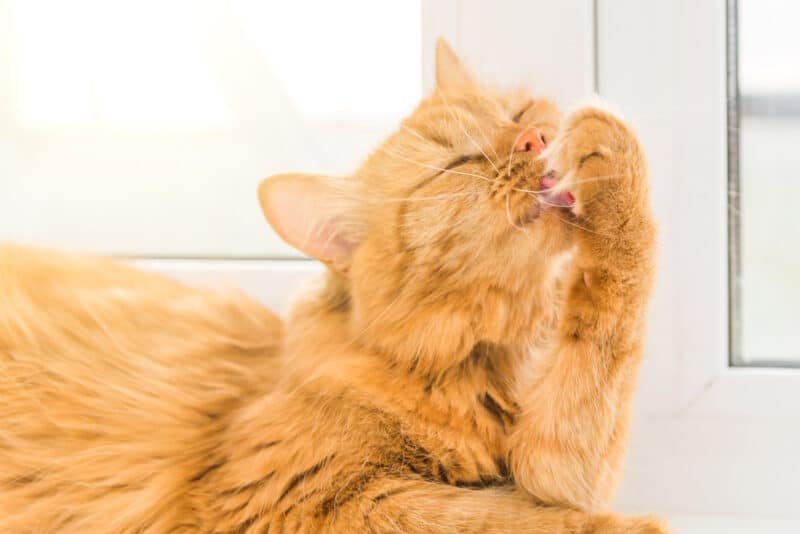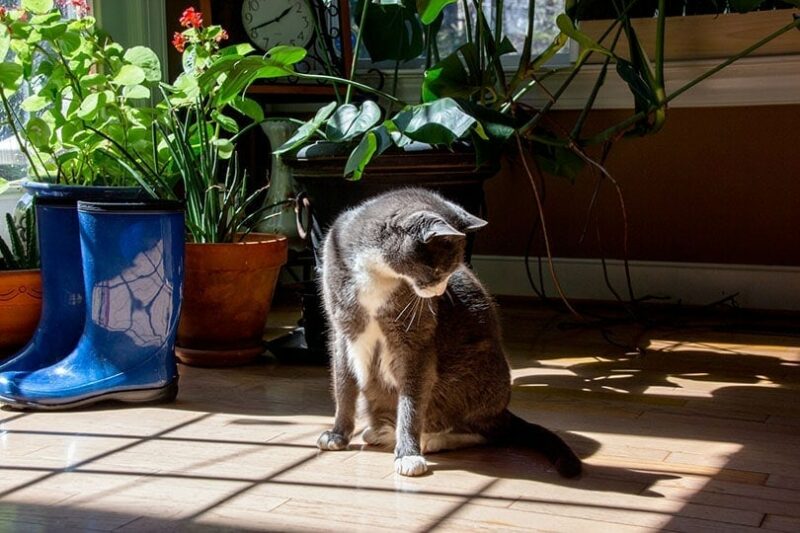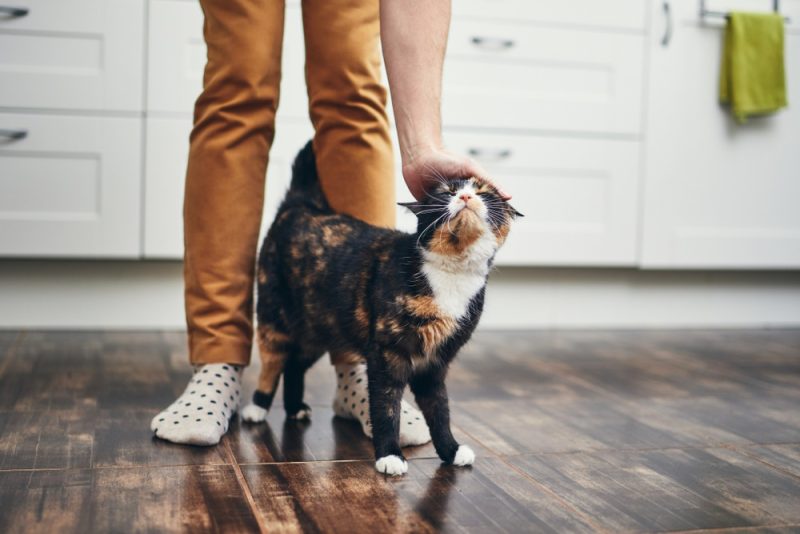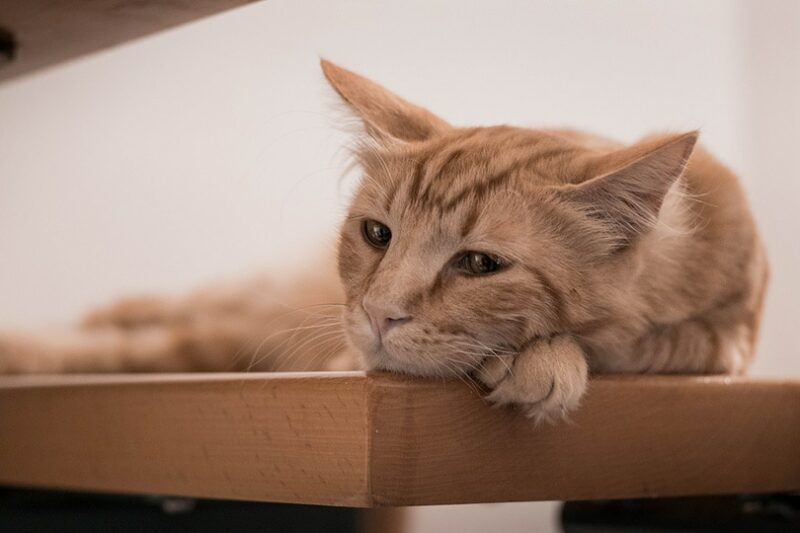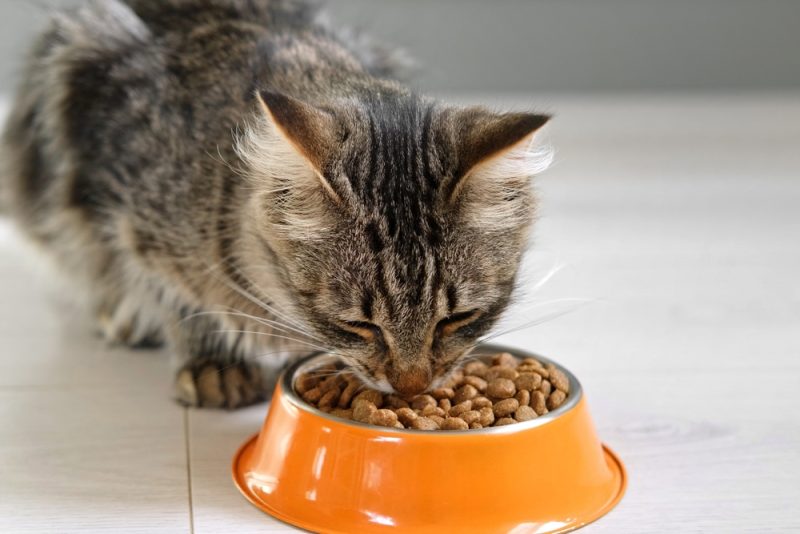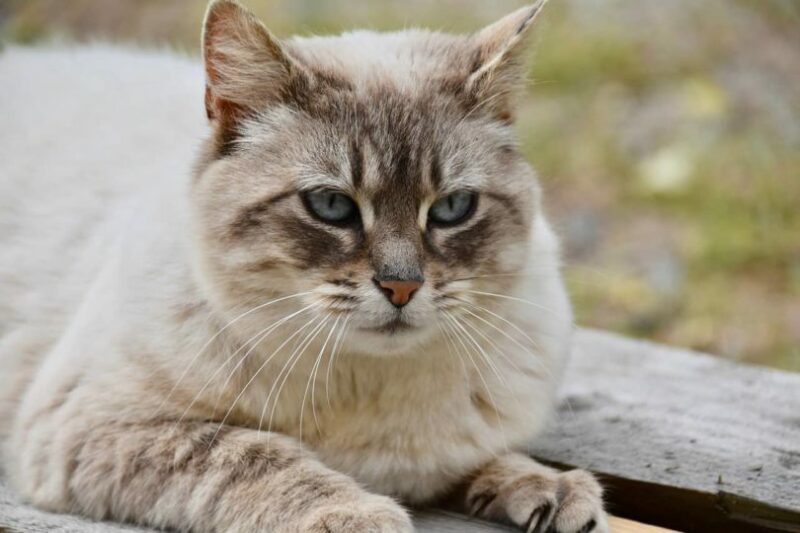In this article
Many people adore cats as pets and are often curious about their cute physical characteristics. They have long, noticeable whiskers, or vibrissae, as they are known technically. However, they are more than just aesthetic additions; these structures resembling hair are important to a cat’s health and well-being. Believe it or not, your cat’s whiskers are essential to their ability to perceive their surroundings. Cats have whiskers because they make it easier for them to move around and interact with their environment
A cat’s whiskers are versatile because they add to a cat’s adorably cute looks but are also highly functional. In this article, we’ll dive into the reasons behind the length and importance of cat whiskers.

The 6 Reasons Why Cats Whiskers Are So Long
1. Prey Detection
Cats are natural hunters that benefit from the use of their long whiskers. The long whiskers aid in the detection of movement to help the cat sense the presence and direction of prey nearby.
The information improves the cat’s chances of a successful hunt by allowing them to time their pounce at the perfect moment. Cats are renowned for having a keen sense of hearing and smell, but their near vision isn’t as good. Cats have trouble focusing on objects up close and see better at a distance.
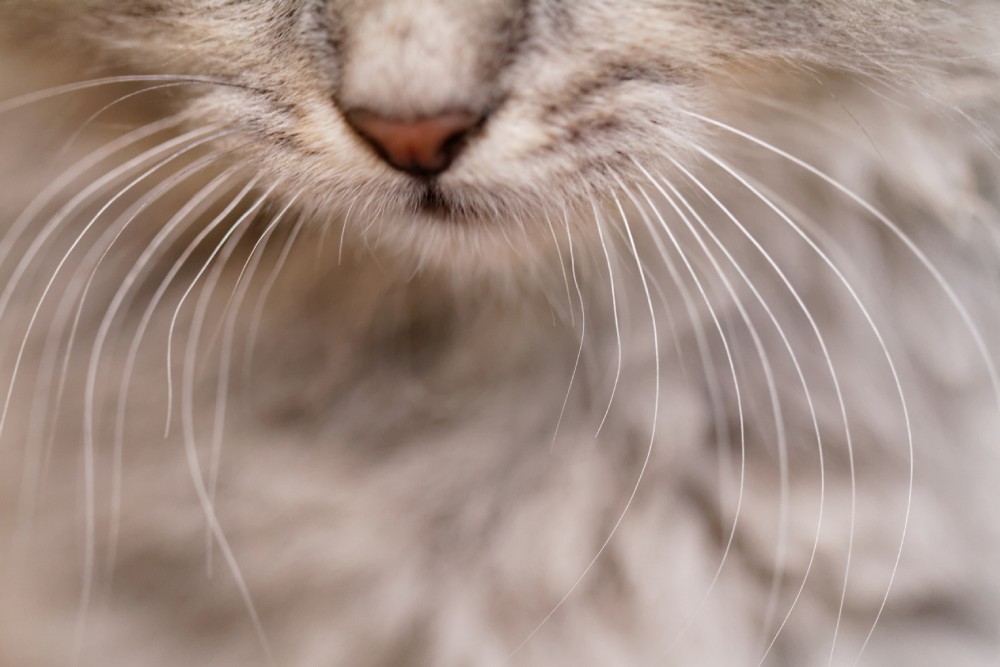
2. Spatial Awareness
A cat’s whiskers are usually about as long as their body is wide. This is not merely a coincidence; it is crucial in the cat’s ability to assess whether they can pass through small openings.
A cat can tell if they can pass through an opening without becoming caught when their whiskers contact the edges of the entrance. This spatial awareness is essential for a creature like a cat that likes to climb, squeeze into small spaces, and explore confined areas.
3. Balance
As a cat owner, you must have noticed that your cat lands perfectly on their feet about 99% of the time! Proprioceptors are specialized sensory organs found at the roots of cats’ whiskers. These help the cat keep balance by communicating with the brain about each part of their body and limbs, their position to each other, and the environment.
4. Improved Sensory Perception
Each cat whisker is attached to multiple nerve endings and deeply embedded in the skin. Because of their sensitivity, whiskers can pick up on even the smallest environmental changes.
For instance, a cat’s whiskers can pick up air currents and vibrations as they travel through the environment. Nocturnal animals like cats benefit most from this enhanced sensory perception to navigate in low light.
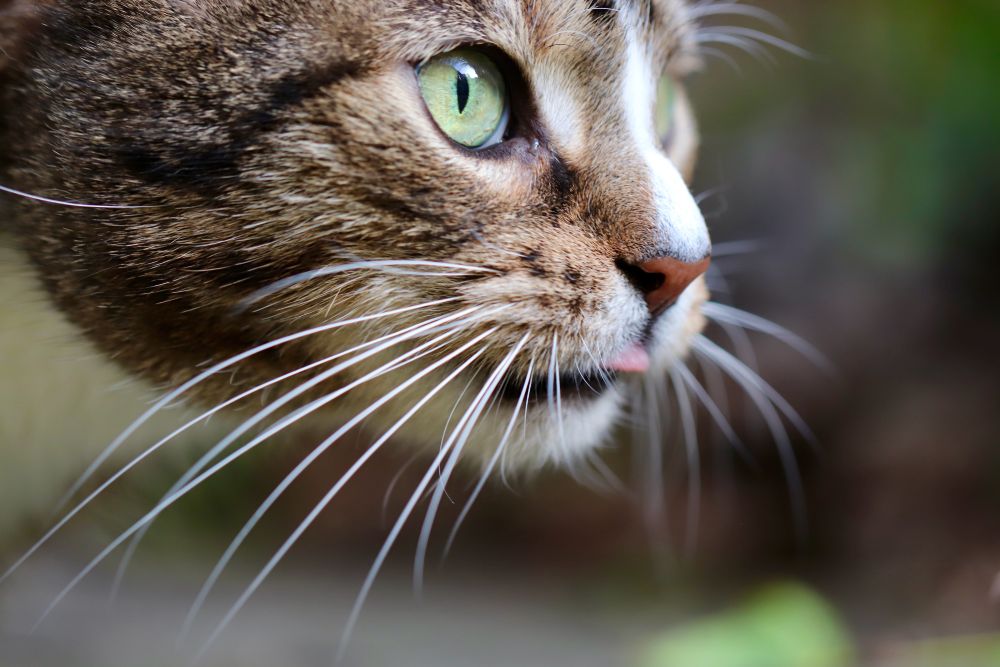
5. Protection
Whiskers act as a protective mechanism for cats. They can detect nearby objects and help prevent cats from bumping into things in their environment. This is particularly helpful in dark or cluttered spaces, such as between bushes of vegetation.
They can also protect a cat’s eyes. The tiniest particles can trigger their whiskers, and if a tiny speck of dust lands on the whisker above their eyes, the cat will shake their head and blink to remove it.
6. Communication
Cat whiskers are involved in communication as well. The location of whiskers can often be used to determine their mood and intentions. For instance, a cat’s whiskers usually are in a neutral, slightly forward position when they feel at ease.
The whiskers can stretch out and point forward when they are alert or irritated. Conversely, a cat’s whiskers may be drawn back against their face when they are scared or submissive.

How Do Whiskers Function?
Their whiskers enable cats to navigate diverse environments by using them to detect minute changes in air currents and relay information about the size, shape, and speed of nearby objects. But how do they do this?
They are often called “tactile hairs,” but they don’t feel things the way we do; instead, they communicate with sensory cells when they pick up on objects or motions. The scientific name for whiskers, vibrissae, comes from the Latin word “vibro,” which means “to vibrate.” The sensitive whisker vibrates and activates the hair follicle’s nerves when air or an item brushes against it.
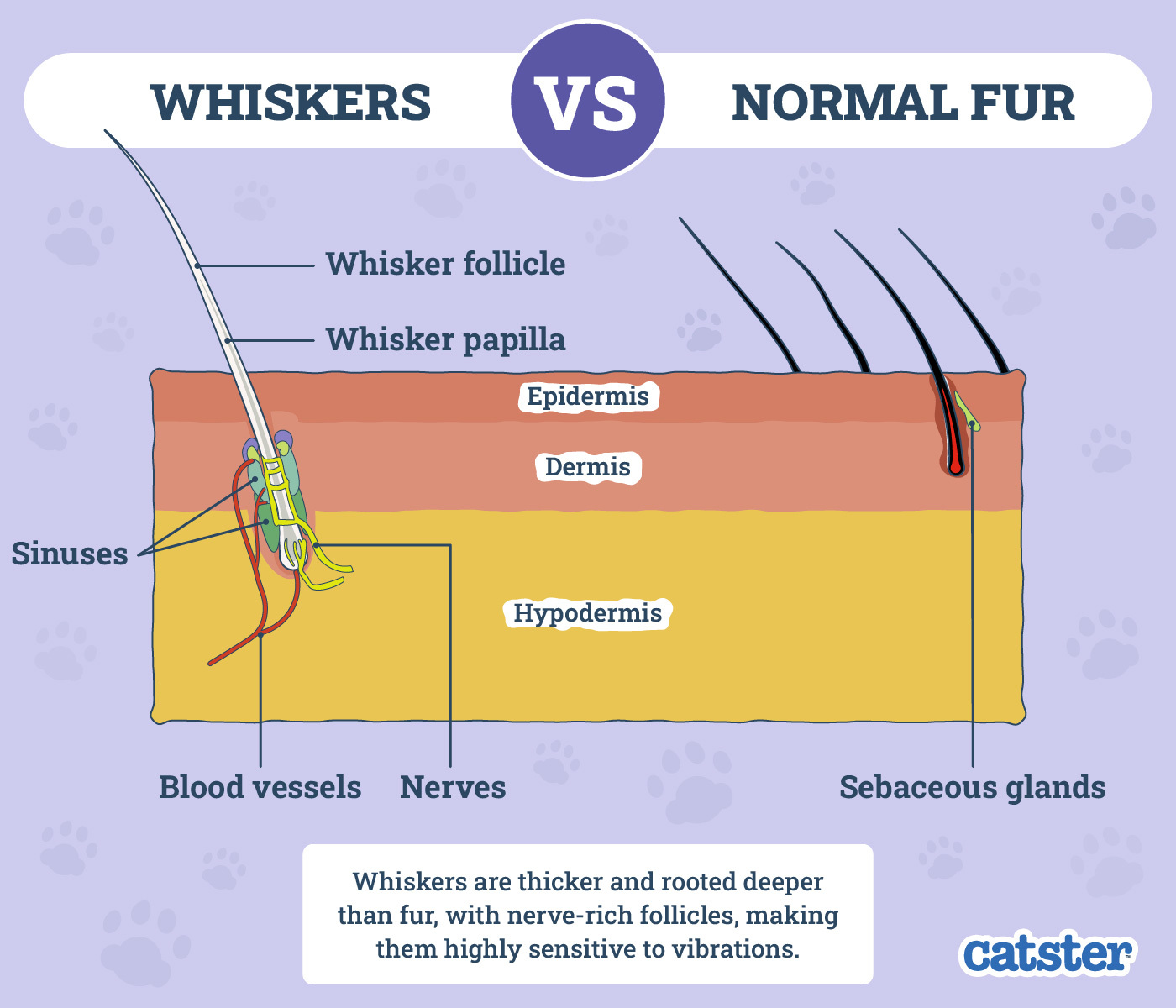
Can I Trim My Cat’s Long Whiskers?
A cat’s whiskers should never be cut. As mentioned previously, the whiskers play a crucial role in a cat’s sensory perception and navigation. Trimming a cat’s whiskers can impair their ability to navigate and perceive their environment, which can lead to confusion, stress, and disorientation.
It can affect their ability to perform essential functions, leading to behavioral changes and a decreased quality of life. Additionally, whiskers are important for a cat’s self-esteem and confidence. Trimming them can cause cats to feel insecure and anxious.
Don’t be frightened if you occasionally discover a stray whisker, especially if it’s close to a cat’s feeding area. Like the rest of their hair, their whiskers fall out occasionally to allow new ones to grow in
Protect Your Cat’s Whiskers
We must protect our cat’s whiskers since they are crucial to a cat’s ability to navigate safely indoors and outside. The cat’s brain is primarily devoted to processing information from touch sensors. Nearly 40% of the brain’s sensory area is aligned with body portions with whiskers.
Since each whisker can be linked to a particular location in the brain, whiskers occupy important neurological space in a cat’s body.
- Never pluck or pull on your cat’s whiskers since it can be painful for your cat.
- Never cut the whiskers.
- Always be gentle with the whiskers when petting your cat.
- Choose food and water bowls with a flatter design to prevent the cat’s whiskers from rubbing against the sides.
Choosing the right food and water bowls for our feline companions can pose certain challenges for pet owners. After careful consideration and research, we have found a bowl that we cannot recommend highly enough! The Hepper NomNom Cat Bowl provides a chic and innovative solution that supports cat-specific needs - dual stainless steel bowls are shallow and wide to aid with whisker fatigue and slight elevation for proper posture.
- NO MESS - The 360° tray on this cat food and water bowl set has a raised design to catch and...
- WHISKER FRIENDLY - Shallow and wide metal containers with flat bottoms ensure your kitty can enjoy...
- CHEW-SAFE MATERIALS - Kittens and cats love chewing on silicone and soft rubber - but it's a choking...
At Catster, we’ve admired Hepper for many years and decided to take a controlling ownership interest so that we could benefit from the outstanding designs of this cool cat company!

Conclusion
A cat’s whiskers are cute and functional. The length of their whiskers is not simply a random characteristic; it fulfills several vital roles that improve the cat’s sensory perception, spatial awareness, ability to hunt, and communication.
So, the next time you look at a cat’s whiskers, remember that they are more than just facial hair; they are essential tools cats use to interact and traverse their environment.
You might also like:
Featured Image Credit: fantom_rd, Shutterstock
